“Marsopotamia” is the proposal of Andrea Bulloni, Matteo Ciabattini, Marco Papagni & Nicolò Sabbadin for Eleven’s visions of Marstopia, the official sequel to the international competition Moontopia, and the second challenge in Eleven’s ‘Architecture in Space’ series. The competition, asked the question “what does Martian vernacular architecture and design look like?”
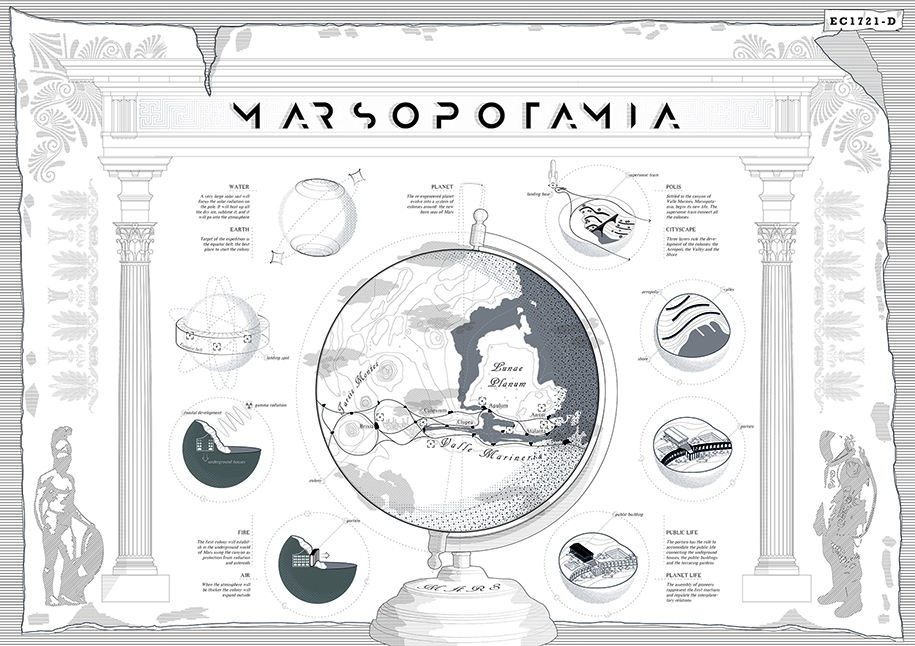
Time reveals itself throughout architecture and this kind of expression occurs when time turns into space throughout built shapes.
text provided by architects – The first interplanetary civilization, however, is timeless, except for the one from which it was conceived: the age of the pioneers. The projection of space thought as a projection on a physical dimension aims at transforming the unknown hostile and impracticable space, into a measurable and possessed orientable space. Space and time are the benchmarks of our world and their meanings are both contained in architectural shapes. Spatial art that arises from architecture has, until now, represented the time and place in which it was conceived, but if there are no time and known places, the configuration of space can represent cultural values of the society that conquers it.
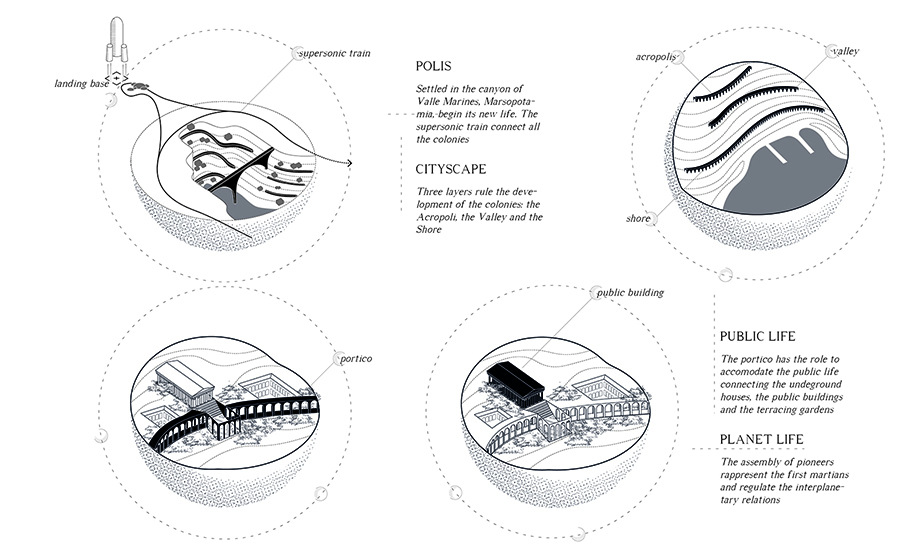
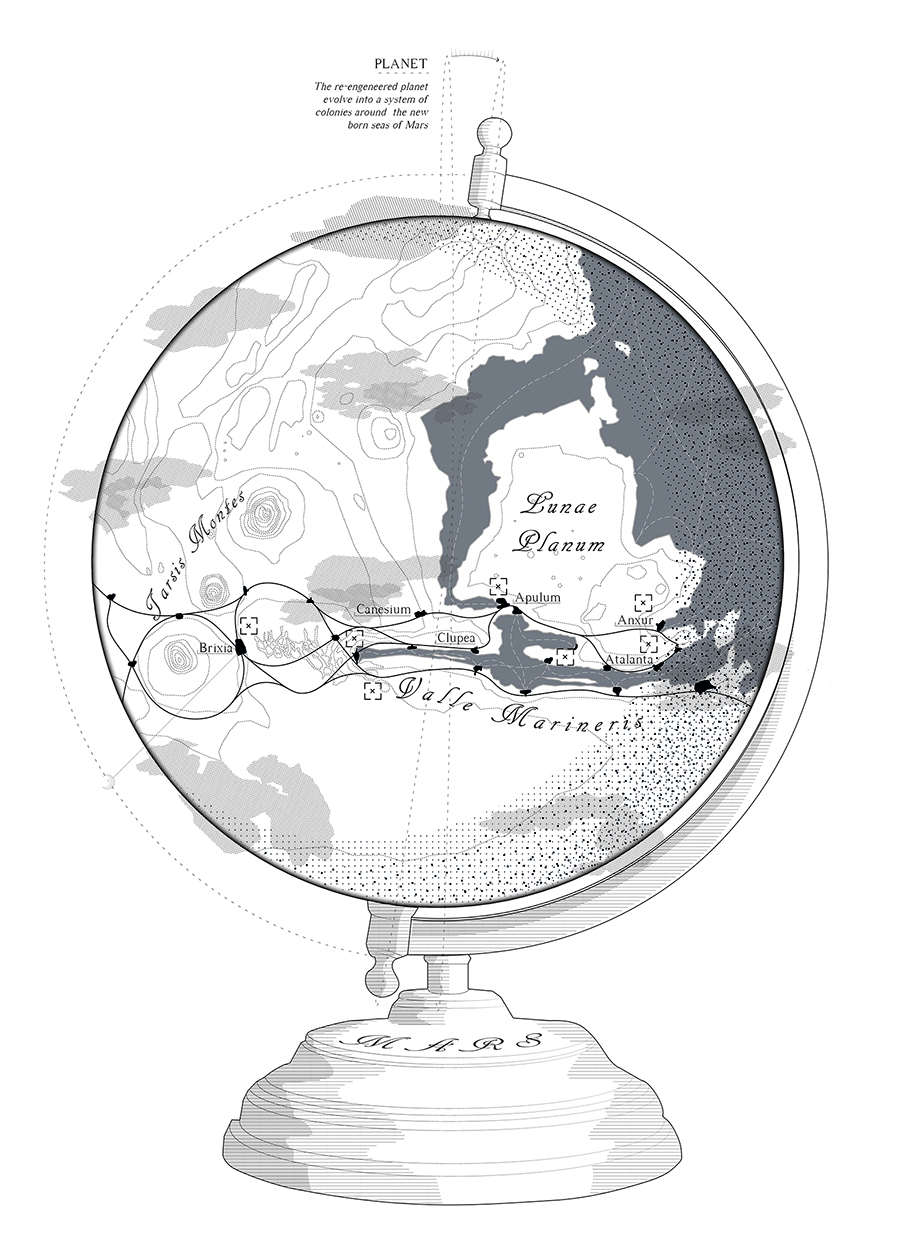
Geometric signs, paradigms of the spatial control, are based on the classical concept of building a society that has been forgotten by contemporary culture and this concept nowadays defines architecture as a way to celebrate the tensions that architecture is able to generate, not its relationship with society. The formal appropriation of the classical figures allows to have a spatial control that is able to generate an architecture that balances the specificity of the place with the autonomy of shapes and it is exactly in this “equilibrium” status that our architecture manages to create a sentimental connection with reality and by transcending time, it reaches self-governance. An independence that has the ability to define architecture as intimate and monumental, specific and autonomous, a manifesto of a specific place but at the same time that belongs to human culture.
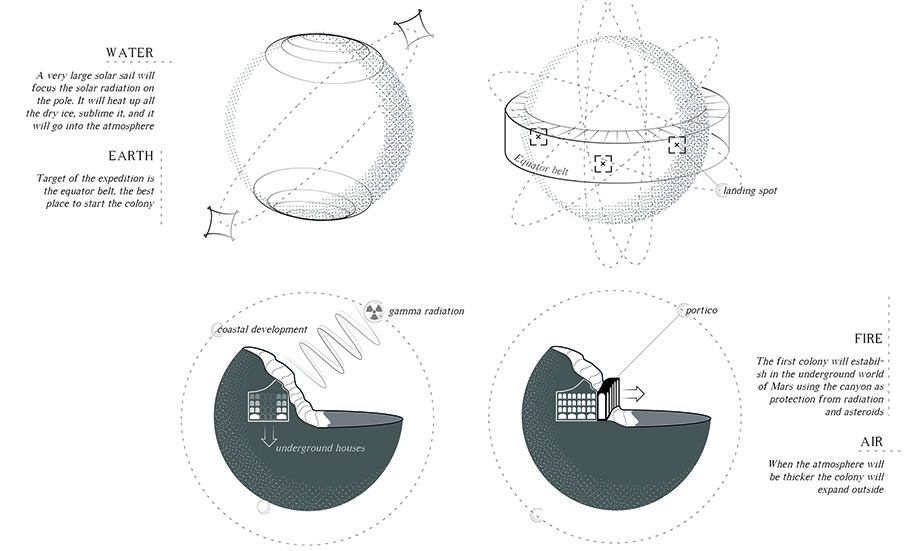
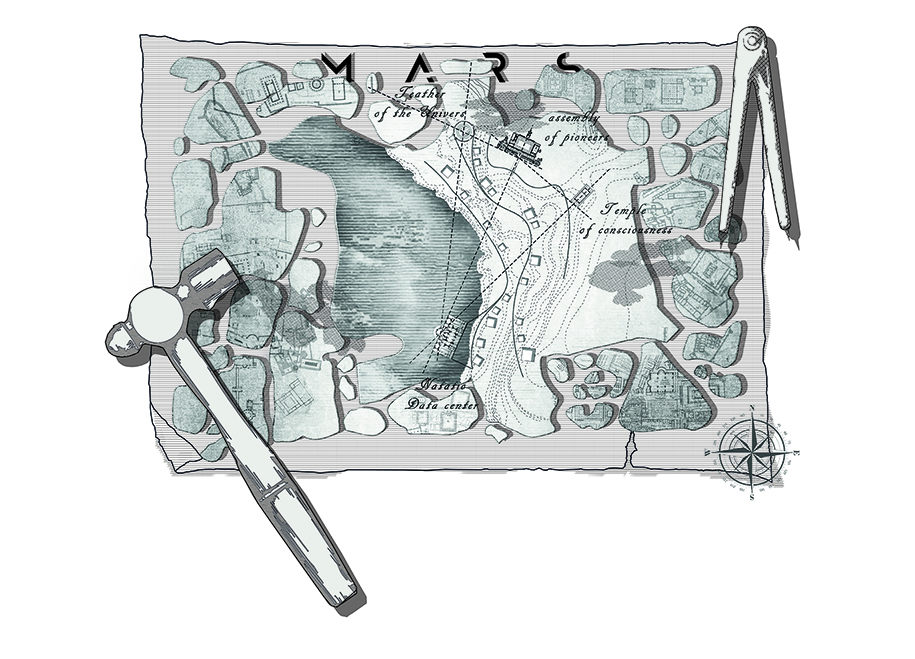
In a time where technological changes rule the principles of flexibility, classical forms assume an even broader meaning, extended spatiality makes it possible for dimensional monumentality with spatial flexibility and spiritual necessity with social evolution to coexist. In a condition of perfect coexistence between sentimentality and technology, the word “utopia” changes the meaning.
The reorganization of the society of pioneers through the classical forms allows us to overcome every preconception. Eternal, peacekeepers, symbols of identity capable of representing the pioneers and inspiring future generations.
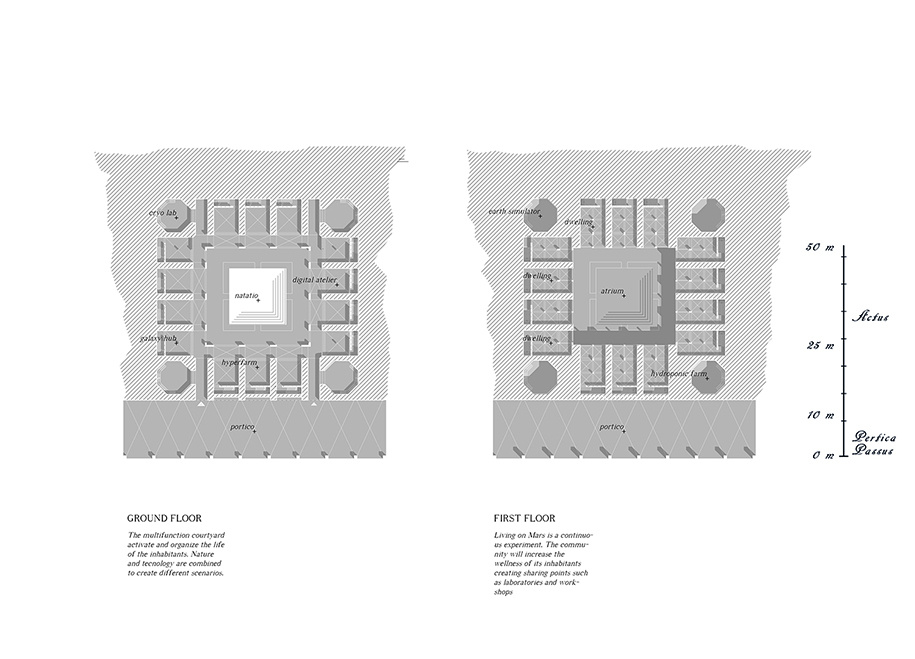
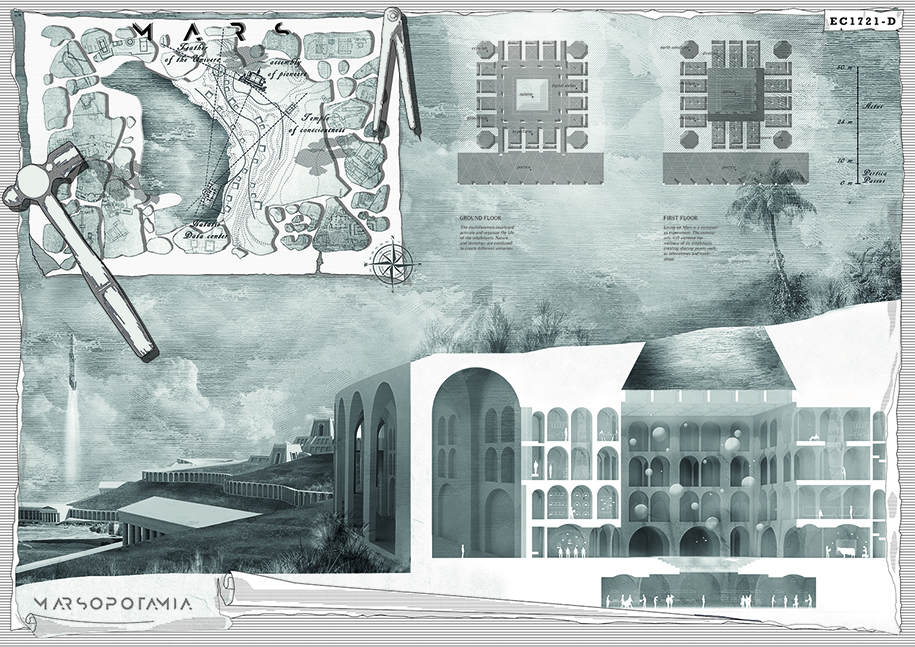
READ ALSO: Threshold as an Everyday Experience by Plaini and Karahalios Architects

